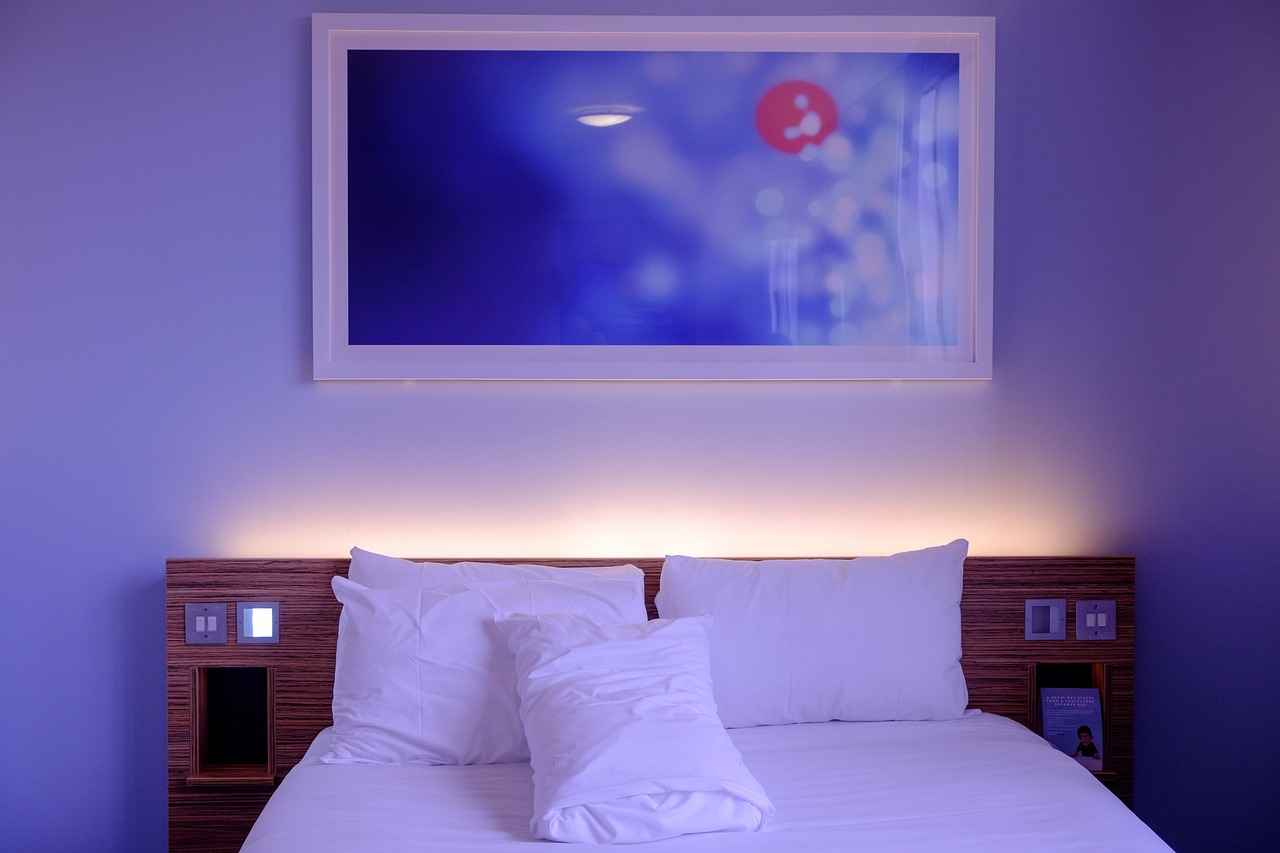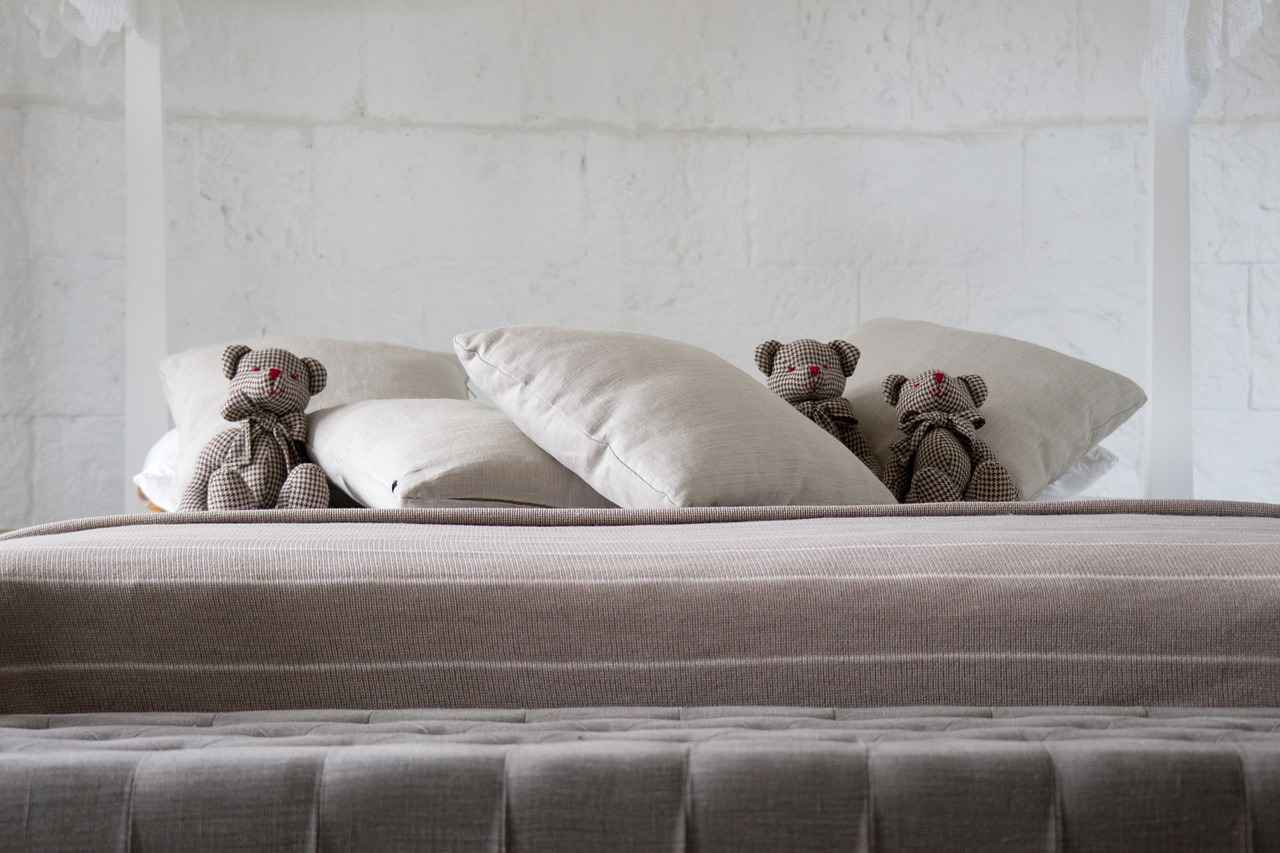Explore innovative foam bed designs that enhance comfort and sleep quality. This article delves into various styles, materials, and features that contribute to a restful night’s sleep. With the right foam bed, you can transform your sleep experience, ensuring you wake up refreshed and ready for the day.
Understanding Foam Mattress Types
Different types of foam mattresses cater to various sleeping preferences. Understanding these types can help you choose the best option for your comfort and support needs. The most common types include:
- Memory Foam
- Latex Foam
- Polyurethane Foam
Benefits of Memory Foam Mattresses
Memory foam mattresses are popular for their ability to conform to the body. This section discusses their benefits, including pressure relief and motion isolation, enhancing overall sleep quality.
Pressure Relief and Support
Memory foam provides excellent pressure relief, which is crucial for side sleepers. This foam contours to the body, alleviating pressure points and promoting better sleep. The unique properties of memory foam allow it to distribute body weight evenly, ensuring that no single area bears too much pressure.
How Memory Foam Works
Memory foam reacts to body heat and weight, allowing it to mold to your shape. This unique property enhances comfort and support, making it a preferred choice for many. As you move, the foam adjusts, providing continuous support throughout the night.
Motion Isolation Features
Memory foam excels in motion isolation, making it ideal for couples. This feature minimizes disturbances from a partner’s movements, ensuring uninterrupted sleep. Couples can enjoy a peaceful night’s rest, even if one partner tends to toss and turn.
Temperature Regulation in Foam Beds
Foam mattresses can retain heat, impacting sleep quality. Various technologies and materials, such as gel-infused foam and breathable covers, are employed to enhance temperature regulation. These innovations allow for a cooler sleep experience, addressing concerns of overheating during the night.
Latex Foam vs. Memory Foam
Latex foam offers a different feel compared to memory foam. While memory foam provides a sinking sensation, latex foam offers a more resilient and bouncy feel. This section compares the two, highlighting their unique characteristics and which might be better suited for individual preferences.
Durability and Longevity
Latex foam mattresses are known for their durability. They typically last longer than memory foam mattresses, making them a worthwhile investment. This subsection examines how their lifespan compares to memory foam, providing insights into long-term investment benefits.
Natural vs. Synthetic Latex
Understanding the differences between natural and synthetic latex foams is crucial. Natural latex is derived from rubber trees and is often more environmentally friendly, while synthetic latex is made from petrochemicals. This section covers the pros and cons of each type, helping consumers make informed choices.
Innovative Foam Bed Designs
Modern design trends incorporate foam in creative ways. This section explores innovative bed designs that enhance aesthetics and comfort, catering to diverse tastes and preferences. From minimalist designs to luxurious upholstered options, there is a foam bed design for everyone.
Adjustable Foam Bed Frames
Adjustable bed frames paired with foam mattresses offer customizable comfort. These frames allow users to elevate their heads or feet, promoting better sleep posture and alleviating various health issues. This subsection discusses the advantages of adjustable frames for various sleeping positions and health benefits.
Eco-Friendly Foam Options
Sustainability is increasingly important in mattress design. This section highlights eco-friendly foam options made from natural materials, appealing to environmentally conscious consumers. Organic cotton covers and plant-based foams are becoming popular choices, providing comfort without compromising the planet.
Choosing the Right Foam Bed for You
Selecting the right foam bed involves considering personal preferences and needs. This section provides practical tips to help consumers make informed decisions based on sleep habits and health. Factors such as firmness level, mattress thickness, and individual sleeping positions should be evaluated.
Testing Before Buying
Trying out a mattress before purchasing is essential. This subsection discusses the importance of testing foam beds in-store or through trial periods offered by manufacturers. Taking the time to lie down on a mattress can help you find the perfect fit for your comfort needs.
Understanding Warranty and Return Policies
A good warranty and return policy can provide peace of mind. This section outlines what to look for in warranties and how they protect your investment in a foam bed. Understanding the terms can help you feel confident in your purchase.

Understanding Foam Mattress Types
When it comes to achieving a restful night’s sleep, choosing the right mattress is crucial. Among the various types available, foam mattresses stand out for their unique comfort and support features. Understanding the different types of foam mattresses can significantly enhance your sleep experience. Here, we will explore the various foam mattress types and their characteristics, helping you make an informed decision.
- Memory Foam: Known for its ability to conform to the body, memory foam mattresses provide exceptional support and pressure relief. They are particularly beneficial for side sleepers, as they alleviate pressure points.
- Latex Foam: Available in natural and synthetic options, latex foam offers a bouncier feel compared to memory foam. It is also known for its durability and responsiveness, making it a popular choice among those who prefer a firmer mattress.
- Polyfoam: This type of foam is often used in budget mattresses and can vary in density and firmness. While it may not provide the same level of support as memory or latex foam, it can still offer decent comfort.
- Gel-Infused Foam: Designed to combat heat retention, gel-infused foam mattresses incorporate gel beads that help regulate temperature. This makes them an excellent choice for hot sleepers who want the benefits of memory foam without the heat.
- Hybrid Foam: Combining foam with innerspring coils, hybrid mattresses offer the best of both worlds. They provide the contouring comfort of foam along with the support and bounce of coils, making them suitable for a wide range of sleepers.
Understanding your sleeping style is essential in selecting the right foam mattress. Here are some tips:
- Back Sleepers: Look for a medium-firm mattress that offers support while still allowing for some contouring.
- Side Sleepers: A softer mattress is ideal to cushion the shoulders and hips, reducing pressure points.
- Stomach Sleepers: A firmer mattress helps prevent the lower back from sinking too deeply, maintaining proper spinal alignment.
When choosing a foam mattress, consider the following:
- Density and Firmness: Higher density foams often provide better support and durability. Choose the firmness level that aligns with your sleeping position and comfort preferences.
- Breathability: Look for features such as gel infusion or open-cell structures to enhance airflow and temperature regulation.
- Trial Periods and Warranties: Take advantage of trial periods to test the mattress at home. A good warranty can also protect your investment.
By understanding the various types of foam mattresses and considering your individual needs, you can make a well-informed decision that enhances your sleep quality. Remember, a good night’s sleep is vital for overall health and well-being, so take the time to choose wisely.

Benefits of Memory Foam Mattresses
Memory foam mattresses have gained immense popularity due to their unique ability to conform to the body’s shape. This adaptability not only enhances comfort but also offers numerous benefits that significantly improve sleep quality. In this section, we will explore the key advantages of memory foam mattresses, including pressure relief, motion isolation, and temperature regulation.
- Pressure Relief and Support
One of the standout features of memory foam is its exceptional pressure relief. This characteristic is particularly beneficial for side sleepers who often experience discomfort at pressure points, such as the shoulders and hips. Memory foam mattresses distribute body weight evenly, allowing for a more restful night’s sleep. By contouring to the body, these mattresses help alleviate pressure points, reducing the likelihood of waking up with aches and pains.
- How Memory Foam Works
Memory foam is designed to respond to body heat and weight, which enables it to mold to the sleeper’s shape. This unique property not only enhances comfort but also provides crucial support, making memory foam a preferred choice for individuals with specific sleep needs, including those with back pain or joint issues.
- Motion Isolation Features
Another significant advantage of memory foam mattresses is their motion isolation capabilities. For couples, this feature is invaluable, as it minimizes disturbances caused by a partner’s movements during the night. Memory foam absorbs motion, ensuring that one person’s movements do not disrupt the other’s sleep, leading to a more peaceful and uninterrupted night.
- Temperature Regulation
While memory foam mattresses are known for their comfort, they can sometimes retain heat, which may affect sleep quality. However, many modern memory foam mattresses incorporate advanced technologies and materials designed to enhance temperature regulation. Features such as gel-infused foam or breathable covers help dissipate heat, creating a cooler sleeping environment.
- Durability and Longevity
Memory foam mattresses are generally durable and can last for several years with proper care. Their resilience makes them a worthwhile investment for those seeking long-term comfort and support. When compared to traditional spring mattresses, memory foam often outperforms in terms of lifespan, making it a practical choice for consumers.
- Health Benefits
Beyond comfort, memory foam mattresses can also provide various health benefits. By promoting proper spinal alignment and reducing pressure on sensitive areas, these mattresses can help alleviate discomfort associated with conditions such as arthritis and chronic pain. Furthermore, the support provided by memory foam can lead to improved sleep posture, contributing to better overall health.
In summary, the benefits of memory foam mattresses extend far beyond mere comfort. With their ability to provide pressure relief, motion isolation, and enhanced temperature regulation, they cater to a wide range of sleep preferences and needs. As you consider your next mattress purchase, keep these advantages in mind to make an informed decision that will enhance your sleep quality.
Pressure Relief and Support
When it comes to achieving a restful night’s sleep, the importance of a supportive mattress cannot be overstated. Memory foam mattresses have gained immense popularity due to their remarkable ability to provide pressure relief and support, particularly for side sleepers. This section delves into how memory foam works to alleviate pressure points, ensuring a more comfortable and rejuvenating sleep experience.
Memory foam is designed to respond to body heat and weight, allowing it to contour to the unique shape of the sleeper. This contouring effect is crucial for side sleepers, who often experience discomfort in areas such as the shoulders and hips. By evenly distributing body weight, memory foam reduces the pressure exerted on these sensitive areas, which can lead to improved blood circulation and a decrease in tossing and turning throughout the night.
One of the standout features of memory foam is its ability to adapt to changes in position. When a sleeper shifts, the foam reconfigures itself, providing continuous support without the feeling of sinking too deeply into the mattress. This characteristic not only enhances comfort but also helps maintain proper spinal alignment, which is essential for avoiding aches and pains associated with poor sleep posture.
| Benefits of Memory Foam for Side Sleepers |
|---|
| Pressure Relief: Reduces discomfort in pressure points. |
| Spinal Alignment: Supports proper posture during sleep. |
| Motion Isolation: Minimizes disturbances from a partner’s movements. |
| Durability: Retains shape and support over time. |
Moreover, memory foam excels in motion isolation, making it a preferred choice for couples. When one partner moves or gets out of bed, the other remains undisturbed, allowing for uninterrupted sleep. This feature is particularly advantageous for light sleepers who might otherwise be awakened by their partner’s movements.
While memory foam offers numerous advantages, it is essential to consider its temperature sensitivity. Traditional memory foam can retain heat, which may disrupt sleep quality for some individuals. However, many modern memory foam mattresses incorporate cooling technologies such as gel-infusions or open-cell structures, which enhance breathability and temperature regulation. These innovations ensure that the mattress remains comfortable throughout the night, catering to those who tend to sleep hot.
In summary, memory foam mattresses are an excellent choice for those seeking pressure relief and support, particularly side sleepers. Their ability to contour to the body, combined with features like motion isolation and temperature regulation, makes them a popular option for enhancing sleep quality. By understanding the benefits of memory foam, consumers can make informed decisions when selecting the right mattress for their sleep needs.
How Memory Foam Works
Memory foam is a revolutionary material that has transformed the sleep experience for many individuals. It is designed to respond uniquely to body heat and weight, allowing it to conform perfectly to the sleeper’s shape. This remarkable adaptability is what sets memory foam apart from traditional mattress materials, enhancing both comfort and support.
When you lie down on a memory foam mattress, the material begins to soften in response to your body heat. As it warms up, it becomes more pliable, enabling it to mold to your curves. This characteristic is particularly beneficial for those who suffer from pressure points, as it distributes body weight evenly across the surface, reducing discomfort and promoting better sleep quality.
One of the most significant advantages of memory foam is its ability to provide pressure relief. For side sleepers, this is especially crucial, as the foam contours to the body, alleviating pressure on the shoulders and hips. By minimizing these pressure points, memory foam helps to reduce tossing and turning throughout the night, leading to a more restful sleep.
Another essential feature of memory foam is its motion isolation capabilities. This means that when one partner shifts or gets out of bed, the other partner is less likely to be disturbed. This quality makes memory foam an excellent choice for couples, as it ensures that both individuals can enjoy uninterrupted sleep.
However, one common concern with memory foam is its tendency to retain heat. Many sleepers find that traditional memory foam mattresses can become uncomfortably warm during the night. To combat this issue, manufacturers have developed various technologies, such as gel-infused memory foam and open-cell structures, which enhance temperature regulation. These innovations help create a cooler sleep environment, allowing you to enjoy the benefits of memory foam without overheating.
Furthermore, memory foam mattresses come in various densities and firmness levels, catering to different sleeping preferences. Whether you prefer a softer feel or a firmer support system, there is likely a memory foam option that meets your needs. Additionally, many brands offer trial periods, allowing you to test the mattress in the comfort of your home before making a long-term commitment.
In conclusion, memory foam works by reacting to your body heat and weight, providing a personalized sleep experience. Its ability to offer pressure relief, motion isolation, and customizable comfort makes it a popular choice for many. As technology continues to evolve, memory foam mattresses are becoming even more advanced, ensuring that they remain a top contender in the quest for the perfect night’s sleep.
Motion Isolation Features
When it comes to achieving a restful night’s sleep, the choice of mattress plays a crucial role. Among various options available, memory foam mattresses stand out, particularly for their exceptional . This quality is especially beneficial for couples, as it minimizes disturbances caused by a partner’s movements during the night.
Memory foam is designed to respond to body weight and heat, allowing it to conform to the sleeper’s body shape. This unique property not only enhances comfort but also significantly reduces motion transfer. When one partner shifts or gets out of bed, the other can remain undisturbed, ensuring a more uninterrupted sleep.
In addition to minimizing motion transfer, memory foam mattresses offer several other advantages. For instance, they provide excellent pressure relief and support, which is essential for maintaining proper spinal alignment. By contouring to the body’s natural curves, memory foam helps alleviate pressure points, making it an ideal choice for side sleepers who often experience discomfort from traditional innerspring mattresses.
Furthermore, many modern memory foam mattresses incorporate advanced technologies to enhance their motion isolation capabilities. Some feature multiple layers with varying densities, which can further dampen movement and provide tailored support. This means that regardless of how active one partner may be during the night, the other can enjoy a peaceful sleep experience.
For couples who share a bed, the importance of motion isolation cannot be overstated. It contributes not only to individual comfort but also to the overall quality of the relationship. Sleep disturbances can lead to irritability and tension, making a good night’s rest essential for maintaining harmony between partners. With a memory foam mattress, couples can enjoy the benefits of a quiet, stable sleeping environment.
Moreover, many manufacturers now offer trial periods that allow consumers to test the mattress in their own home. This is an excellent opportunity to assess the motion isolation features in a real-world setting, ensuring that the mattress meets your specific needs. If you find that the mattress does not perform as expected, the trial period typically includes a hassle-free return policy.
In summary, the motion isolation features of memory foam mattresses make them a superior choice for couples seeking a peaceful night’s sleep. By minimizing disturbances from a partner’s movements, these mattresses enhance overall sleep quality, leading to better health and well-being. Whether you are a light sleeper or simply value uninterrupted rest, investing in a memory foam mattress can significantly improve your sleep experience.
Temperature Regulation in Foam Beds
When it comes to achieving a restful night’s sleep, temperature regulation in foam beds is a crucial factor that cannot be overlooked. Many foam mattresses, particularly traditional memory foam, are known for their ability to retain heat, which can significantly impact sleep quality. In this section, we will explore various technologies and materials designed to enhance temperature regulation, ensuring a cooler and more comfortable sleep experience.
Foam mattresses are often praised for their comfort and support; however, one of the common complaints is their tendency to trap heat. This heat retention can lead to discomfort, especially for those who tend to sleep hot. Understanding how different types of foam react to body heat is essential for selecting the right mattress.
- Gel-Infused Foam: One of the most effective solutions for combating heat retention is the incorporation of gel beads into the foam. These gel-infused foams are designed to absorb and dissipate heat, keeping the surface of the mattress cooler.
- Open-Cell Structure: Some modern foam mattresses utilize an open-cell structure that promotes airflow. This design allows heat to escape more efficiently, providing a cooler sleeping environment.
- Phase Change Materials (PCMs): PCMs are innovative materials that absorb, store, and release heat as needed. Mattresses featuring PCMs can regulate temperature by adapting to the sleeper’s body heat, ensuring optimal comfort throughout the night.
The outer cover of a foam mattress also plays a significant role in temperature regulation. Many manufacturers now use breathable fabrics such as cotton or bamboo, which promote airflow and wick away moisture. This enhances the overall cooling effect of the mattress.
For those who struggle with heat retention, hybrid mattresses that combine foam with innerspring coils may offer a solution. The coils provide better airflow compared to solid foam, allowing for enhanced temperature regulation while still offering the comfort of foam.
When selecting a foam mattress, it is essential to consider your personal preferences and sleeping style. Side sleepers may prefer softer foam that conforms to their body, while back sleepers might benefit from a firmer mattress that provides better support. Understanding how these factors affect temperature regulation can lead to a more informed choice.
Before committing to a foam mattress, it’s wise to take advantage of trial periods offered by many manufacturers. Testing the mattress in your home environment allows you to evaluate its temperature regulation capabilities and overall comfort. Pay attention to how the mattress performs during the night, particularly in terms of heat retention.
In summary, temperature regulation is a vital aspect of foam beds that directly influences sleep quality. By understanding the technologies and materials available, consumers can make informed decisions when selecting a mattress that meets their comfort needs while ensuring a cooler sleep environment.

Latex Foam vs. Memory Foam
When it comes to choosing the right mattress, understanding the differences between latex foam and memory foam is crucial for achieving optimal comfort and support. Each type of foam offers unique characteristics that cater to various sleeping preferences, making it essential to explore their features, benefits, and potential drawbacks.
Feel and Comfort
Latex foam is known for its responsive and springy feel, providing a buoyant surface that allows for easy movement. In contrast, memory foam is designed to conform to the body’s shape, creating a cradling effect that can feel like you are sinking into the mattress. This distinction is particularly important for individuals who prefer a more traditional feel versus those who enjoy being enveloped by their mattress.
Pressure Relief and Support
Both latex and memory foam offer excellent pressure relief, but they do so in different ways. Memory foam excels at alleviating pressure points by contouring to the sleeper’s body, making it an ideal choice for side sleepers. On the other hand, latex foam provides a more firm support, which can be beneficial for back and stomach sleepers who require a flatter surface to maintain proper spinal alignment.
Temperature Regulation
Temperature sensitivity is another critical factor when comparing these foams. Memory foam is notorious for retaining heat, which can lead to discomfort during the night. Many manufacturers now incorporate cooling gels or breathable covers to mitigate this issue. Conversely, latex foam is naturally more breathable and cooling, allowing for better air circulation and temperature control, making it a suitable option for those who tend to sleep hot.
Durability and Longevity
Durability is a significant consideration when investing in a mattress. Latex foam is renowned for its long lifespan, often lasting up to 15 years or more with proper care. Memory foam, while still durable, typically has a shorter lifespan, averaging around 7-10 years. This difference in longevity can affect your long-term investment, making latex foam a potentially more economical choice in the long run.
Natural vs. Synthetic Options
Another aspect to consider is the material composition. Natural latex foam is derived from rubber trees and is often favored for its eco-friendly properties. In contrast, synthetic latex foam is made from petrochemicals and may not offer the same level of sustainability. Memory foam, predominantly made from polyurethane, can also vary in terms of environmental impact depending on the manufacturing process. Understanding these differences can help consumers make informed choices that align with their values.
Cost Considerations
Price is always an important factor in mattress selection. Generally, latex foam mattresses tend to be more expensive than memory foam options due to their manufacturing process and materials. However, considering the longevity and durability of latex foam, it may provide better value over time. Memory foam mattresses can be found at various price points, making them accessible for a broader range of budgets.
Conclusion
Choosing between latex foam and memory foam ultimately comes down to personal preference and sleeping style. Those who prefer a responsive surface and natural materials may gravitate towards latex foam, while individuals seeking conforming comfort and pressure relief may find memory foam more appealing. By understanding the unique characteristics of each type, consumers can make a more informed decision that enhances their sleep quality.
Durability and Longevity
When considering a mattress investment, durability and longevity are crucial factors that can significantly impact your overall satisfaction and financial commitment. Among the various options available, latex foam mattresses stand out for their remarkable lifespan compared to other types, particularly memory foam mattresses.
Latex foam is derived from the sap of rubber trees, which gives it natural resilience and durability. On average, a well-maintained latex mattress can last anywhere from 15 to 25 years, making it a long-term investment for consumers. In contrast, memory foam mattresses typically have a lifespan of about 7 to 10 years. This difference in longevity can be attributed to the materials used and the structural integrity of each type of foam.
| Mattress Type | Average Lifespan | Durability Factors |
|---|---|---|
| Latex Foam | 15-25 years | Natural elasticity, resistance to sagging |
| Memory Foam | 7-10 years | Heat retention, prone to softening |
One of the key advantages of latex foam is its resistance to sagging and indentation. Over time, many memory foam mattresses can develop permanent impressions where the sleeper lies, which can compromise comfort and support. In contrast, latex foam maintains its shape and support, providing consistent comfort throughout its lifespan.
Additionally, latex foam mattresses are less susceptible to allergens and dust mites due to their natural properties. This can lead to a healthier sleep environment, especially for individuals with allergies or respiratory issues. Memory foam, while initially resistant, can trap heat and moisture, creating a less favorable environment over time.
Investing in a latex foam mattress may seem more expensive upfront, but considering the longevity and durability, it often proves to be a more economical choice in the long run. The cost per year of use is significantly lower compared to memory foam options, which may require replacement more frequently.
In summary, if you prioritize durability and long-term comfort, latex foam mattresses present a compelling choice. Their superior lifespan, resistance to sagging, and hypoallergenic properties make them a wise investment for those seeking a reliable and comfortable sleeping solution.
Natural vs. Synthetic Latex
When it comes to selecting the right foam mattress, understanding the differences between natural and synthetic latex foams is crucial. Both types of latex offer unique characteristics that cater to different consumer needs and preferences. This section will delve into the pros and cons of each type, providing valuable insights for informed decision-making.
What is Natural Latex?
Natural latex is derived from the sap of the rubber tree, making it a renewable resource. This type of latex is known for its durability, elasticity, and breathability. Natural latex mattresses are often considered more eco-friendly due to their sustainable production processes and lack of harmful chemicals. Additionally, they are inherently resistant to dust mites and mold, making them a great choice for allergy sufferers.
Pros of Natural Latex:
- Eco-Friendly: Sourced from renewable resources.
- Durability: Typically lasts longer than synthetic options.
- Comfort: Offers excellent support and pressure relief.
- Hypoallergenic: Naturally resistant to allergens.
Cons of Natural Latex:
- Cost: Generally more expensive than synthetic latex.
- Weight: Can be heavier and harder to move.
What is Synthetic Latex?
Synthetic latex, on the other hand, is made from petroleum-based products through a chemical process. While it can mimic some properties of natural latex, it often lacks the same level of durability and comfort. Synthetic latex is typically more affordable, making it an attractive option for budget-conscious consumers.
Pros of Synthetic Latex:
- Affordability: Generally less expensive than natural latex.
- Variety: Available in a wide range of firmness levels and options.
Cons of Synthetic Latex:
- Durability: May not last as long as natural latex.
- Heat Retention: Can trap heat, impacting sleep quality.
- Allergens: May contain chemicals that could trigger allergies.
Which One Should You Choose?
The choice between natural and synthetic latex ultimately depends on personal preferences and priorities. If you value sustainability, natural materials, and long-lasting comfort, a natural latex mattress may be the best option for you. However, if you’re looking for a more budget-friendly alternative with a variety of options, synthetic latex could meet your needs.
It’s essential to consider factors such as your sleeping style, budget, and any allergies you may have when making your decision. Testing mattresses in-store or taking advantage of trial periods can also help ensure you find the perfect fit for your sleep needs.

Innovative Foam Bed Designs
are reshaping the way we think about sleep, merging comfort with style. As the demand for better sleep solutions grows, manufacturers are creatively incorporating foam into bed designs that not only enhance aesthetics but also provide unparalleled comfort. This section explores a variety of innovative designs that cater to diverse tastes and preferences, ensuring that every individual can find the perfect bed for their needs.
- Contemporary Minimalist Designs: Modern foam beds often feature sleek lines and a minimalistic aesthetic. These designs focus on simplicity and functionality, making them perfect for contemporary interiors.
- Multi-Functional Foam Beds: Some innovative designs include beds that serve multiple purposes, such as incorporating storage solutions or transforming into a sofa. This versatility is ideal for smaller living spaces.
- Customizable Foam Beds: With the rise of personalization, some companies offer customizable foam beds that allow users to adjust firmness levels or even the shape of the mattress to suit their sleeping style.
Another exciting trend in foam bed design is the integration of smart technology. Many modern foam mattresses come equipped with sensors that monitor sleep patterns and adjust firmness accordingly. This technology not only enhances comfort but also aids in improving overall sleep quality. For instance, some smart beds can automatically elevate the head or foot of the mattress based on the sleeper’s preferences or health needs.
Moreover, the use of eco-friendly materials in foam bed designs is gaining popularity. Manufacturers are increasingly focusing on sustainable practices by utilizing natural latex or plant-based foams. These materials not only provide excellent support and comfort but also appeal to environmentally conscious consumers who are looking for sustainable options.
In addition, the aesthetic appeal of foam beds has been enhanced through innovative upholstery options. From luxurious fabrics to unique patterns, the external design of foam beds can complement various interior styles. This attention to detail allows homeowners to choose beds that not only feel good but also look good in their space.
As we explore the realm of foam bed designs, it’s essential to consider the ergonomic features that many modern designs offer. These features are specifically designed to support the natural alignment of the body, reducing strain on the back and neck. Beds with zoned support systems provide targeted pressure relief, making them ideal for individuals with specific health concerns.
Furthermore, innovations in temperature regulation technology are enhancing the sleep experience. Many foam mattresses now include cooling gels or breathable covers that help dissipate heat, ensuring a comfortable sleep environment. This is particularly beneficial for those who tend to sleep hot, as it minimizes nighttime disturbances.
In conclusion, the world of innovative foam bed designs is vast and varied, offering something for everyone. Whether you prioritize comfort, sustainability, or aesthetics, there is a foam bed that meets your needs. As you explore these options, consider your specific sleep preferences and lifestyle to find the perfect match for a restful night’s sleep.
Adjustable Foam Bed Frames
When it comes to achieving the perfect night’s sleep, adjustable bed frames paired with foam mattresses provide a revolutionary solution. These innovative designs allow users to customize their sleeping positions, catering to individual comfort needs and promoting better health outcomes. In this section, we will explore the numerous advantages of adjustable frames and how they can enhance your sleep experience.
One of the primary benefits of adjustable bed frames is their versatility. With the ability to modify the angle of the head and foot of the bed, users can find their ideal sleeping position. This feature is particularly beneficial for individuals who suffer from conditions such as acid reflux or sleep apnea, as elevating the head can alleviate symptoms and promote easier breathing during sleep.
Moreover, adjustable frames can significantly improve comfort for side sleepers. By allowing users to elevate their legs, these frames can relieve pressure on the hips and shoulders, which is crucial for preventing discomfort and ensuring restful sleep. Similarly, back sleepers can adjust the frame to maintain spinal alignment, reducing the risk of back pain.
In addition to comfort, adjustable bed frames offer various health benefits. For instance, individuals with poor circulation can benefit from elevating their legs, which encourages blood flow and reduces swelling. Furthermore, those recovering from surgery or injury may find it easier to get in and out of bed with an adjustable frame, promoting independence and enhancing recovery.
Another significant advantage is the enhanced relaxation that adjustable beds provide. Many models come equipped with features such as built-in massage functions, which can help to relieve tension and stress after a long day. This added element of relaxation can contribute to a more restful night’s sleep, allowing you to wake up feeling rejuvenated.
When considering the integration of an adjustable frame with a foam mattress, it’s essential to choose a mattress that is compatible. Memory foam and latex foam mattresses are popular choices due to their ability to contour to the body while maintaining support. This combination ensures that the benefits of both the adjustable frame and the foam mattress work in harmony to enhance sleep quality.
For those who are environmentally conscious, many manufacturers now offer eco-friendly foam options that are compatible with adjustable frames. These mattresses are made from natural materials and designed to minimize environmental impact, appealing to consumers who prioritize sustainability in their purchasing decisions.
In summary, adjustable bed frames paired with foam mattresses provide a multitude of benefits, from customizable comfort to significant health improvements. By allowing users to modify their sleeping positions, these frames cater to various needs and preferences, making them an excellent investment for anyone seeking to enhance their sleep quality. Whether you suffer from specific health conditions or simply want to enjoy a more comfortable night’s rest, the combination of adjustable frames and foam mattresses is a winning choice.
Eco-Friendly Foam Options
Sustainability has become a central theme in various industries, and the mattress design sector is no exception. As consumers increasingly prioritize eco-friendly products, manufacturers are responding by developing innovative foam options made from natural materials. This shift not only caters to environmentally conscious consumers but also promotes healthier sleeping environments.
One of the most popular eco-friendly materials used in foam mattresses is natural latex. Sourced from the sap of rubber trees, natural latex is biodegradable and free from harmful chemicals. Unlike synthetic alternatives, which can contain volatile organic compounds (VOCs), natural latex is produced using sustainable methods, making it a safe choice for both consumers and the planet.
Another notable option is plant-based memory foam. This type of foam incorporates renewable resources, such as soy or other plant oils, into its production process. By reducing reliance on petroleum-based products, plant-based memory foam offers a more sustainable alternative without compromising on comfort. It retains the signature pressure-relieving properties of traditional memory foam while being more environmentally friendly.
| Eco-Friendly Foam Type | Source | Benefits |
|---|---|---|
| Natural Latex | Rubber tree sap | Biodegradable, chemical-free, durable |
| Plant-Based Memory Foam | Soy and other plant oils | Reduced petroleum use, comfort, pressure relief |
| Recycled Foam | Post-consumer waste | Reduces landfill waste, sustainable |
Moreover, the use of recycled foam is gaining traction in the industry. By repurposing materials from old mattresses and other foam products, manufacturers can create new foam without the need for virgin materials. This not only helps reduce landfill waste but also minimizes the carbon footprint associated with production.
In addition to the materials used, the production processes for these eco-friendly foams are also being refined. Many manufacturers are adopting green manufacturing practices that minimize water usage and energy consumption. These practices not only contribute to a smaller environmental impact but also enhance the overall quality of the products.
For consumers looking to invest in an eco-friendly mattress, it is essential to look for certifications that indicate sustainable practices. Certifications such as Global Organic Textile Standard (GOTS) and OEKO-TEX ensure that the materials used are organic and free from harmful substances, providing peace of mind.
Ultimately, the shift towards eco-friendly foam options in mattress design represents a significant step towards a more sustainable future. As awareness of environmental issues continues to grow, consumers are empowered to make informed choices that align with their values. By selecting mattresses made from natural and recycled materials, individuals can enjoy a comfortable night’s sleep while also contributing to the health of our planet.

Choosing the Right Foam Bed for You
Choosing the right foam bed is essential for achieving a restful night’s sleep. With a plethora of options available, it can be overwhelming for consumers to navigate the various types of foam mattresses. This section aims to provide practical tips that take into account individual preferences, sleep habits, and health needs, ultimately guiding you to make an informed decision.
- Assess Your Sleep Position: Your primary sleeping position greatly influences the type of foam bed you should consider. Side sleepers often benefit from softer foam that alleviates pressure on the shoulders and hips, while back and stomach sleepers typically require a firmer surface for optimal support.
- Evaluate Your Body Weight: Heavier individuals may find that high-density foam offers the necessary support and durability, whereas lighter individuals might prefer softer options that provide comfort without sinking too deeply.
- Consider Temperature Sensitivity: If you tend to sleep hot, look for foam mattresses with cooling technologies, such as gel-infused foam or open-cell structures. These features enhance airflow and help regulate body temperature throughout the night.
- Identify Health Concerns: Those with specific health issues, such as back pain or joint problems, should prioritize mattresses that offer adequate support and pressure relief. Consulting with a healthcare professional can provide personalized recommendations.
- Test Before You Buy: If possible, visit a store to test different foam mattresses. Spend at least 10-15 minutes lying on each type to gauge comfort and support. Many manufacturers also offer trial periods, allowing you to experience the mattress in your home environment.
Additionally, understanding the warranty and return policies of a foam bed is crucial. A robust warranty can protect your investment, ensuring that you are covered for any manufacturing defects. Look for warranties that last at least 10 years, as this indicates the manufacturer’s confidence in their product.
Furthermore, consider the material composition of the foam. Natural latex options are often more breathable and environmentally friendly than synthetic alternatives. If sustainability is a priority for you, researching eco-friendly foam options can lead to a mattress that aligns with your values.
Lastly, take the time to read customer reviews and expert opinions. These insights can provide valuable information about the durability, comfort, and overall satisfaction of various foam beds. By considering all these factors, you can confidently select a foam bed that meets your unique needs and enhances your sleep quality.
Testing Before Buying
When it comes to purchasing a new mattress, especially a foam bed, is a crucial step that should never be overlooked. Many consumers underestimate the importance of this process, often opting to make a decision based solely on online reviews or specifications. However, experiencing the mattress in person can significantly impact your overall satisfaction and sleep quality.
Why Testing Matters
Every individual has unique sleep preferences, and what works for one person may not work for another. By trying out a mattress in-store, you can assess its comfort level, firmness, and support. This firsthand experience allows you to identify whether a particular foam type suits your sleeping style, be it back, side, or stomach sleeping.
In-Store Testing
When visiting a mattress store, take your time to lie down on various models. Spend at least 10-15 minutes on each mattress, assuming your typical sleeping position. Pay attention to how the mattress feels under your body weight and whether it provides adequate support for your spine. Additionally, consider how the mattress responds when you change positions, as this can give insights into the mattress’s overall comfort and adaptability.
Trial Periods Offered by Manufacturers
Many foam mattress manufacturers now offer generous trial periods, allowing you to test the mattress in the comfort of your home. This is an excellent opportunity to determine if the mattress meets your needs over several nights. During this period, pay attention to how your body feels upon waking, and whether you experience any discomfort or changes in your sleep quality.
Understanding Firmness Levels
| Firmness Level | Description | Best For |
|---|---|---|
| Soft | Conforms closely to the body | Side sleepers |
| Medium | Balanced support and comfort | Combination sleepers |
| Firm | Provides strong support | Back and stomach sleepers |
Choosing the right firmness is essential for achieving a restful night’s sleep. Testing various firmness levels in-store can help you identify which category you fall into, ensuring that your mattress choice aligns with your personal comfort needs.
Feedback from Sales Associates
Don’t hesitate to engage with sales associates during your visit. They are often knowledgeable about the products and can provide valuable insights based on customer feedback. Ask them about the most popular models and any specific recommendations based on your sleeping habits.
Final Thoughts
In conclusion, the importance of a foam mattress cannot be overstated. Whether you choose to visit a store or take advantage of a trial period, investing time in this process can lead to better sleep quality and overall satisfaction with your purchase. Remember, a mattress is not just a financial investment; it is an investment in your health and well-being.
Understanding Warranty and Return Policies
is essential when investing in a foam bed. A comprehensive warranty not only protects your purchase but also provides a sense of security, ensuring that you are covered in case of defects or dissatisfaction with the product. In this section, we will explore the key elements to look for in warranties and return policies, and how they safeguard your investment.
When evaluating a warranty, consider the following aspects:
- Duration: Look for a warranty that offers a substantial time frame, typically ranging from 10 to 25 years. Longer warranties often indicate the manufacturer’s confidence in the product’s durability.
- Coverage: Ensure that the warranty covers significant issues such as sagging, material defects, and workmanship. Some warranties may exclude certain damages, so it’s crucial to read the fine print.
- Transferability: A transferable warranty can add value if you decide to sell your mattress in the future. This feature allows the new owner to benefit from the remaining warranty period.
- Conditions: Be aware of any conditions that may void the warranty, such as improper use or failure to follow care instructions. Understanding these terms helps you maintain your warranty status.
In addition to warranties, a strong return policy is equally important. A flexible return policy allows you to test the mattress in your own home, ensuring it meets your comfort and support needs. Here are some critical points to consider:
- Trial Period: Look for a trial period of at least 30 to 100 nights. This duration gives you ample time to assess whether the mattress suits your sleeping habits.
- Return Process: Understand the steps involved in returning the mattress. A hassle-free return process is essential for a positive customer experience.
- Refund Policy: Check if the refund is full or partial and if any fees apply for returns. A full refund policy is preferable as it demonstrates the company’s commitment to customer satisfaction.
In conclusion, a robust warranty and a customer-friendly return policy are vital components of your foam bed investment. They not only provide peace of mind but also protect you from potential loss. By carefully reviewing these policies, you can make an informed decision and enjoy your foam bed with confidence.
Frequently Asked Questions
- What are the main benefits of memory foam mattresses?
Memory foam mattresses provide excellent pressure relief, contouring to your body shape for maximum comfort. They also excel in motion isolation, making them ideal for couples who may disturb each other during sleep.
- How do I choose between memory foam and latex foam?
Choosing between memory foam and latex foam depends on your personal preferences. Memory foam offers a softer, more contouring feel, while latex foam is typically more responsive and bouncier. Consider what feels best for your sleeping style.
- Are there eco-friendly foam mattress options available?
Yes! Many manufacturers now offer eco-friendly foam mattresses made from natural materials. These options cater to environmentally conscious consumers looking for sustainable sleep solutions.
- How important is it to test a mattress before buying?
Testing a mattress is crucial! It allows you to assess comfort levels and support. Many stores and online retailers offer trial periods, giving you the chance to try the mattress at home before making a final decision.
- What should I look for in a warranty for a foam mattress?
When considering a warranty, check for duration and coverage details. A good warranty should protect against defects and provide peace of mind regarding your investment in a foam bed.












